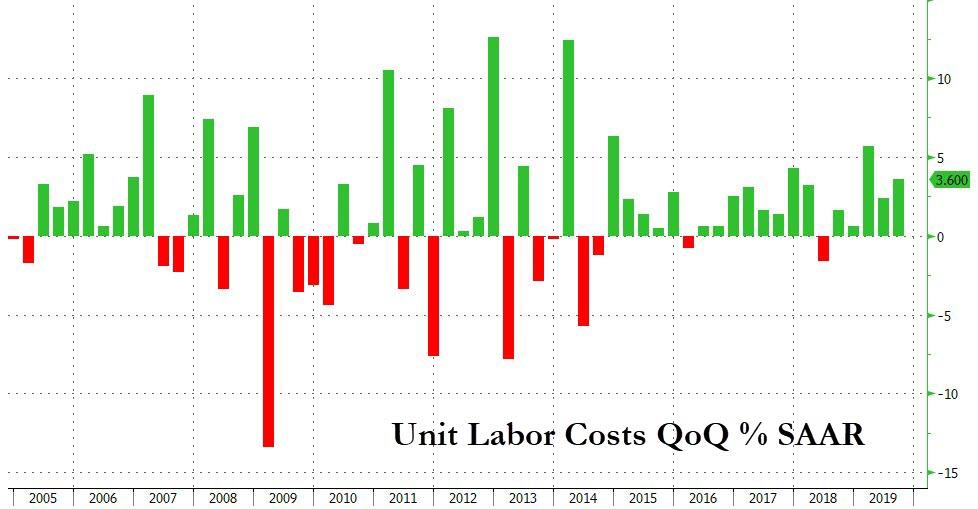US Productivity unexpectedly posted the first decline in almost four years and labor costs accelerated in Q3, suggesting a pickup in efficiency earlier this year was more of a temporary shift.
Nonfarm business employee output per hour decreased at a 0.3% annualized rate in the third quarter, well below the expected rise of 0.9% and the first decline since December 2015.
The report showed the decline in productivity resulted from a 2.1% increase in output against a 2.4% rise in hours worked.
Driving this decline was surging unit labor costs (+3.6%) following 2.4% in the prior period...
Source: Bloomberg
From a year earlier, productivity rose 1.4%, down from 1.8% in the prior period. Unit labor costs were up 3.1% year-over-year, which could be a sign that a tight job market is filtering through to what companies are spending on wages.
Get back to work Mr.Powell?


Commenti
Posta un commento